by Debbie Burke
We don’t know what we don’t know.
After self-publishing eight books in six years, I can definitively say, no matter how much knowledge I think I have, there’s always waaaaay more to learn.
Here are three things I wish I’d known when I started.
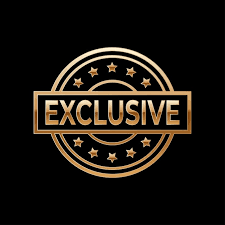
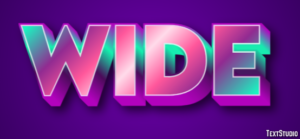
1. Exclusive or wide? The decision whether to publish exclusive or wide is a complicated choice without clear answers. But it’s also one of the most important decisions you’ll make. Give it serious consideration.
First, let’s translate terms in the language of self-pub speak.
Exclusive means you publish and sell your books solely through Amazon’s Kindle Direct Publishing (KDP).
Going wide means, in addition to Amazon, you sell your books through other distributors (Barnes & Noble, Apple, Kobo, etc.).
The self-pub learning curve is steep and it’s a good idea to become familiar with the basic process first before you consider branching out. There’s a reference list at the end of this post to help.
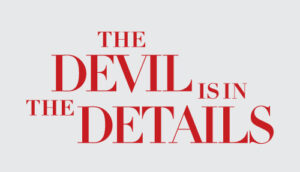 Because Amazon is the major marketplace, I recommend starting with them for your first self-publication. But be careful you don’t inadvertently make choices that might cause problems if you later decide to go wide. The devil is in the details which I’ll expand on in a minute.
Because Amazon is the major marketplace, I recommend starting with them for your first self-publication. But be careful you don’t inadvertently make choices that might cause problems if you later decide to go wide. The devil is in the details which I’ll expand on in a minute.
Here are some KDP pros:
- The majority of self-published books are sold through Amazon, so it makes economic sense to go with the biggest marketplace. Many authors build entire careers creating, publishing, and selling their books only through Amazon. TKZ’s own Jim Bell has done well by staying exclusive.
- KDP provides an excellent system that walks the author through the steps. One doesn’t need to be a tech-savvy programmer to produce an attractive professional-looking book using their Kindle Create program.
- Through KDP, you can publish ebooks, print, hardcover, audio, and additional options. Paperbacks are good quality and author copies are at a reasonable cost.
- Their market reach is second to none.
- They offer exclusive promotions via Kindle Select to encourage the author to stay within their universe.
However, that universe has drawbacks. Here are a few cons:
- They change rules without notice, often in ways that seem capricious and punitive.
- An author’s account may be suspended or terminated for violating their lengthy terms and conditions. Sometimes algorithms make the decision and bots don’t offer explanations. Recourse is difficult. If an author can’t sell books, they are out of business.
- KDP doesn’t allow you to offer a book for free (as a reader magnet) without a complicated workaround that requires frequent updating.
- Most independent booksellers will not deal with Amazon.
KDP’s “Expanded Distribution” is one of the devilish details mentioned above. The terms imply the ability to distribute to markets outside of Amazon.
This is their explanation:
“Booksellers and libraries purchase paperbacks from large distributors. If you enroll your paperback in Expanded Distribution, we’ll make your book available to distributors so booksellers and libraries can find your book and order it…Booksellers and libraries around the world may purchase books from these distributors. It’s free to enroll your paperback in Expanded Distribution, and it allows your book to be made broadly available outside of Amazon.”
Sound great, right? But notice the wording (the emphasis is mine). They “make your book available to distributors so booksellers and libraries can find your book and order it.” They “may” purchase your books.
That doesn’t mean they will.
The reality is most bookstores are unlikely to purchase books from the source that threatens their ability to stay in business. Can you blame them for not buying bullets from an enemy that wants to shoot them?
Additionally, bookstore and library computer systems are set up to order books through distributors like Ingram, not Amazon. Even if patrons request your book, a library will likely say no because it’s more time and trouble than it’s worth.
So, if you click the “expanded distribution” button, you actually lose some ability to sell through other distributors.
Fortunately, this is easy to reverse: if you clicked the expanded distribution button (as I did originally), simply unclick it.
After several years of exclusivity with Amazon, I decided to go wide. Most sales still come from Amazon but I prefer to have eggs in several different baskets.
KDP is a good, easy-to-learn system to get your started in self-publishing but you may decide not to spend the rest of your career there. The lesson is to leave your options open. Terms and conditions change over time and what sounds fine today may not work for you in the future.
2. Amazon isn’t the only game in town. There are many self-publishing alternatives: Ingram Spark, Draft2Digital (D2D), BookBaby, Lulu, Smashwords (now merged with D2D), Barnes & Noble, Kobo, etc. All those choices can overwhelm a new self-publisher.
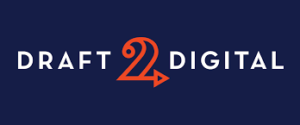
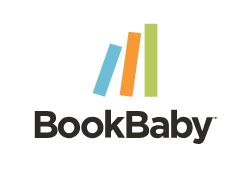

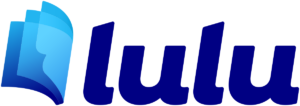
Fasten your seatbelts. This next section is complicated.
Since I’d rather write than learn about different self-pubbing systems, initially I took the path of least resistance and stayed exclusive with Amazon. I used their Kindle Create program to design and format.
But…you can use Create files only on KDP. If you want to go wide, you can’t take those files to different distributors. To reach other markets, you have to create different file versions of your books.
For several years, the need to learn additional programs intimidated me and prevented me from going wide.
Then I read Terry’s excellent 2020 post about Draft2Digital.
At last, here was a publishing system easy enough for the tech-challenged writer! With Terry’s coaching, I went wide using D2D.
With Draft2Digital, you upload a Word file to their system. Then use their excellent templates to design and format a professional-looking ebook, paperback, or both. There is no cost to use their formatting service. Free really is free.
D2D creates formatted book files that can then be uploaded to B&N, Apple, Kobo, etc.
Since I’m too lazy to learn the quirks of each market’s system, I let D2D do the distribution. I select markets where I want to sell and D2D takes care of the rest, uploading the files to each market’s particular specifications. They also keep track of and pay royalties. For that service, they take a percentage of sales. Because they provide great value with free formatting, I don’t mind paying 10%. For me, it’s worth it.
You can also upload files directly to the various markets and save the fee.
However, I don’t recommend using D2D distribute to Amazon. In fact, Amazon erects so many roadblocks, D2D provides a checklist to overcome them:
“In order to better serve our authors, Draft2Digital first requires that you take steps to gain access to Amazon as a digital store option. As soon as each step is verified by our team, Amazon will be activated as an option for your account.”
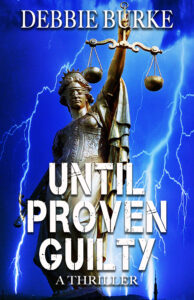 I should have listened to those warning bells before I tried an experiment with the seventh book in my series, Until Proven Guilty.
I should have listened to those warning bells before I tried an experiment with the seventh book in my series, Until Proven Guilty.
At that time, with six self-published books under my belt, I felt pretty comfortable and confident about the process.
You know what they say about pride going before the fall.
Instead of the usual process of uploading the book to Amazon first, then uploading to D2D, I chose to have D2D distribute UPG to Amazon, along with the other markets. That way, I figured, only one sales link was needed. Easy peasy, right?
Wrong.
Using D2D as the distributor caused problems with Amazon that I’d never encountered before.
Normally a new book in a series is automatically linked to the other books in the series. But this time, the new book wouldn’t link. That glitch required repeated contacts with KDP.
An even worse obstacle cropped up. For several weeks after publication, customers couldn’t find the book. Even when they typed “Until Proven Guilty by Debbie Burke” directly into the Amazon search box, a message said that title couldn’t be located. Many more contacts with KDP finally resolved the problem.
But that delay was especially bad for a new book launch.
I’m guessing the reason for these problems is because KDP prefers the author chooses Amazon as their primary distributor. Using D2D as the distributor disrupts their system and makes the bots cranky.
Lesson learned. Now, I upload to Amazon first. Then I upload to D2D for other markets. That means two sales link buttons, one for Amazon and one for everyone else, but that’s a small inconvenience. The problems have not recurred since.
I’d be remiss if I didn’t say a few words about Ingram. They are biggest distributor and the one used by most booksellers and libraries. Ingram Spark (IS) is their branch for self-published books. Through them, your physical books can be ordered by any store, including retailers like Walmart and Target.
IS books are print on demand (POD) and the quality is excellent although their prices are a little higher than KDP’s POD.
At some point, you may want to upload your books to IS because that gives your books the widest distribution.
But… their system is somewhat difficult to navigate, according to discussions among various writing groups I belong to. For now Ingram is a task I’ll put off for the future.
Since I haven’t used other self-pub options (Book Baby, Lulu, etc.), I didn’t address them. The above only describes my personal experience with KDP and D2D. YMMV.
3. ISBNs. When I first published, ISBNs seemed like a trivial detail, but I later discovered they are important for distribution and sales of print books.
Although ebooks generally sell the most, a significant number of readers prefer a physical book. Paperbacks account for a quarter to a third of my sales.
KDP produces a good quality print-on-demand book at a reasonable price, so I used them.
But…I ran into problems with ISBNs.
What are ISBNs? This is the American Library Association explanation:
“The International Standard Book Number (ISBN) is a 13-digit number that uniquely identifies books and book-like products published internationally.”
Why does the ISBN matter? That is essentially your book’s unique fingerprint and how it’s located in the Books in Print database. If you want bookstores and libraries to be able to order physical copies of your books, you need ISBNs.
Side note: ISBNs aren’t necessary for ebooks.
How do you get ISBNs?
The official supplier of ISBNs is Bowker. They are pricy: $125 for one, $295 for ten, $575 for 100. You must use a different ISBN for each format of the same book. In other words, if you publish paperback, hardback, large print, and audiobook editions, each requires a separate ISBN. That expense adds up quickly, which is daunting for a new self-publisher.
The other option: use the free ISBNs provided by KDP. However…that leads to another devilish detail.
Trying to save money, I used KDP’s free ISBNs. Later I learned free comes with a price.
The price is:
“Those numbers can only be used within the Amazon system. The free ISBN from KDP can only be used on KDP for distribution to Amazon and its distributors. It cannot be used with another publisher or self-publishing service.”
When I decided to go wide, those free ISBNs from KDP didn’t work for other markets like Barnes & Noble, Apple, Kobo.
Even if your books are published using a business name (e.g. XYZ Thriller Press), the ISBN still identifies it as originating from KDP. Bookstores can recognize those free numbers and often will not order from them.
 Case in point: in this year’s Christmas card from my college roommate, she mentioned she’d tried to buy my latest book Deep Fake Double Down in paperback from B&N. The ebook was available from B&N but not a print book. She prefers to purchase from B&N but, being a good friend, she went ahead and bought the paperback from Amazon.
Case in point: in this year’s Christmas card from my college roommate, she mentioned she’d tried to buy my latest book Deep Fake Double Down in paperback from B&N. The ebook was available from B&N but not a print book. She prefers to purchase from B&N but, being a good friend, she went ahead and bought the paperback from Amazon.
My ISBN mistake really hit home with the opening of a new B&N store in my town. The manager offered to feature local authors but their computer system can’t order my books using KDP’s ISBN. He graciously agreed to take books on consignment but that is only a temporary arrangement for the grand opening. In the future, I will need to publish updated paperback versions with my own ISBNs so B&N can order them.
D2D can also provide a free ISBN. This is how they handle it:
Draft2Digital will automatically assign an ISBN to any book published through our system free of charge.
The ISBN recording agency will denote Draft2Digital as the “vendor of record” on their website for any ISBN D2D purchases, but that label does not give us any rights to your work nor will it show publicly. All of our digital stores will continue to show the publisher name you choose (or, if you left the publisher name blank, it will show your author name).
In retrospect, I wish I had bitten that expensive bullet at the outset and bought my own ISBNs from Bowker. After all, that’s part of the cost of doing business and self-publishing is a business.
~~~
None of my errors has proved fatal (yet!). I’m sure I’ll make new ones in the future. Thankfully most mistakes or wrong choices can be reversed. Fixing them just takes time…time you’d rather spend writing.
Fortunately, lots of solid information about self-publishing is available. Here are several sources I trust:
Alliance of Independent Authors (ALLi);
Dave Chesson (excellent advice about Kindle Direct Publishing);
Joanna Penn (tenured, respected expert);
Insecure Writer’s Support Group (IWSG) offers this comprehensive resource list.
We don’t know what we don’t know but, with time, we learn.
Then we learn there’s always more to learn.
~~~
TKZers: if you self-pub, what do you wish you’d known when you started?
If you haven’t self-pubbed yet, what question concerns you the most?

FWIW, I also blame being exclusive to Amazon for my inability to get a BookBub Featured Deal – as far as I can tell, BB has readers who prefer authors who are wide with their books. I MAY BE WRONG. Not only are you giving your book away (and it may take me another five years to finish my trilogy) for 0.99 or 0, but their readers want it to be that on the platform of their choice.
However, as a disabled author, Amazon has been my salvation – easy to publish, easy to keep track, even easy to do ads (if your readers search on Amazon). Clean paperwork every year for the tax people. Etc.
Going wide is something I may NEVER achieve because it means dealing with many different systems, and I very barely manage ONE.
It gets very discouraging. Especially since I think a BB FD would be very good for my kind of fiction (mainstream literary! as an indie) because BB actually has a decent proportion of readers who read what I write. Efforts via other sites such as Fussy Librarian, etc., have not been successful, and I personally think it’s because most of the readers on their newsletter lists are looking for genre fiction. I MAY BE WRONG.
But if I’m right, I need to be wide to improve sales – and it isn’t going to happen with my daily energy levels.
You’re right that BookBub doesn’t like exclusivity. It’s possible to get a deal, but much harder.
As Debbie pointed out, you can use D2D to distribute to the other channels, so you don’t have to learn a lot of systems. (They’re not really that hard–they all want the same information, it’s just a matter of where to put it on their project forms.)
D2D also distributes to libraries and subscriptions services, so you get a bigger reach.
Alicia, interesting about BB ads and exclusivity. Two friends who were early in self-pubbing (20-teens) did well with BB but at that point there were few choices outside Amazon.
As Terry says below, D2D is very easy to work with.
Publishing/marketing by nature is frustrating b/c there are no magic bullets or shortcuts to lots of sales. If you write b/c you love to write, sometimes that’s the reward. Wishing you the best with finishing your next book.
I’ve had 2-3 BB feature deals per year for several years.
Thank you so much for this post. As a not-yet-pubbed author, I’ve been dreading leaving the world of ‘relax and write’ & having to learn the 12 million details associated with publishing your work. You covered a whole lot in just one post and thanks also for the additional resources.
As an unpublished author, the biggest obstacle is the sense of absolute overwhelm at those 12 million details you have to be familiar with. Like making time for writing, I just need to schedule time to methodically learn all these options, ins and outs then make a decision about whether to go wide, exclusive, etc etc.
I admit, although I think it’s been mentioned on TKZ before, I forget that ISBNs aren’t needed for ebooks. I think because in my mind I don’t separate ISBN from copyright security.
Thanks again for this post. I was just thinking this weekend, “how in the world do I get started learning the bazillion things I need to know about publishing?” and here on Tuesday you gave me an excellent start.
So glad to help, Brenda! It IS overwhelming and your estimate of 12 mm things is accurate. When I drafted this post, it was a lot longer. Even after cutting, it’s still long. Maybe I’ll do a followup later about three more things I wish I’d known.
When you start, just eat the elephant one bite at a time.
Excellent summary, Debbie. My ebook to print ratio in sales is about 98 to 2, so I don’t sweat the ISBNs. I’ve done one of my books in print via both Amazon and B&N, and I don’t think I’ve ever sold a copy at B&N.
Given that the royalties any of my ebooks are far more than my royalties on a print book, I don’t sweat it.
BTW, if you do go with expanded distribution for print with Amazon, you’ll take a 20% drop in your royalties.
Terry, revenue is the key. It all depends on sales volume, i.e., do fewer sales at a higher royalty truly compensate? IOW, number crunching is involved.
Thanks, Terry! You convinced me to go wide and kindly walked me through the process.
My percentage of print books is high b/c I do book clubs and personal appearances where people want a signed copy. Also my demographic leans toward print.
Great information Deb. Thank you for the clear delineation of your processes and the stumbling blocks. I have found similar issues and am extremely pleased with the addition of the D2D E-book and paperback publications of all of my books.
Betty
Thanks, Betty! With your many books, going wide thru D2D makes a lot of sense.
Good morning, Debbie 🙂
Thank you for this comprehensive post. It’s a generous compilation of your hard-learned experience. As I get closer to sending my books out into the world, I’ll be referring to it to help guide me.
All the best … Lou
You’re so welcome, Lou! Let us know when you release your trilogy.
Fantastic post, Debbie! Lots there to digest.
I would add a comment about formatting software: Atticus (for PC) ($147) and Vellum (for Apple/Mac) ($250). I have found Atticus easier to work with than the challenges of formatting directly with KDP. Atticus, like Vellum allows you to save and format information that you will use in future books. And since I began using Atticus, KDP has accepted my files for both print and eBook on initial upload.
Of course, if you’re going wide, you can use D2D to format your files. If you want to start out exclusive, you can use Atticus/Vellum for formatted files and save the 10% royalty to D2D.
Thanks for all the great information!
Thanks, Steve.
Glad you mentioned formatting. That intimidates a lot of writers. But Atticus, Vellum, and D2D do the heavy lifting and create a professional-looking book.
When talking about D2D’s 10% cut, don’t forget that Amazon also takes a cut –I think they call it a delivery fee — for every book, based on length. The best “ROI” is from Barnes & Noble or Kobo, who pay exactly what the royalty percentage says you’ll get. Not a significant difference, but it does add up.
My lessons:
1. I wish I’d gone exclusive sooner.
2. Amazon is still the biggest game (store) in town. Some people don’t like that, but that’s a philosophical, not a financial objection.
3. Yes, buy 100 ISBNs if you plan on being around, and writing, awhile. You don’t need them for audio if you use ACX or the new Virtural Voice option on Amazon.
Thanks for those additions, JIm. Esp. the details about audiobooks which I haven’t done yet. You’ve been at this for much longer and more successfully than I have. Always glad for your experienced input.
Excellent summary, Debbie. There’s so much to learn!
When I decided to self-pub my second novel, I made the decision to go wide. I just couldn’t go along with Amazon’s exclusivity requirement. I also read The Bakers and the Pot of Gold, an allegory about what happens when one organization owns everything. You can find it at
https://blog.smashwords.com/2020/03/the-bakers-and-pot-of-gold.html
I use Vellum (a great product!) to format my books and upload to all the sites myself. I also use D2D to distribute to libraries and book stores. And I’m on Ingram Spark. (They require a separate ISBN for ebooks.)
Thanks, Kay. The learning curve is higher than Everest. We just put one foot in front of the other.
Ingram is next on my to-do list. I ran into problems when I initially tried and gave up. Now I’m highly motivated so B&N can order my books.
Just read the allegory link, Kay. Wow, spot on! Thanks for sharing that.
Excellent self-publishing overview, Debbie! There’s a lot to cover. My presentation to the local Willamette Writers chapter three weeks ago was by necessity more cursory. I did list TKZ as a resource, and hopefully some of the attendees will see your post.
I started out exclusive with KU for the first seven months of 2017 but transitioned to wide that August and have done well. Yes, there’s more to learn, though distributing through D2D can make it much easier. In my case, I go direct at the Big Five of Ebook retailers (Amazon, Apple, B&N, Google Play, and Kobo, and then use D2D to distribute to various small retailers, and Kobo to distribute to Overdrive.
I use D2D now to distribute my print books (I use KDP Print just for Amazon), and that’s worked well.
While I was writing the first two books in my Empowered series in 2016, I was also heavily researching self pub, and landed in an excellent Facebook group run by my friend Susan Kaye Quinn which helped tremendously.
The one thing I wish I’d known when I pressed publish was the importance of avoiding comparisonitis. It’s good to learn from successful Indies, but our circumstances differ, and each of us is unique in someway. I have friends who can write 6-8 books a year. Two was the most I could write, but I drove myself and my wonderful developmental editor (and friend) Mary crazy during 2016 because I was determined to write four novels that year.
The same goes for risk tolerance, including the possibility of the ban hammer being wielded if you are in KU.
Wonderful post which I’ll point to in the future.
Thanks for your kind words, Dale!
And thanks also for adding your important experience.
Comparasonistis is hard to overcome when you perceive other authors doing better than you are. But if you had to walk in their shoes, better might not look so attractive.
I’ve learned to accept my energy limitations. One book a year, blogging, writing articles and columns, teaching, and editing are enough to keep me productively occupied but not crazy.
Great point about “walking in their shoes.” I’ve seen some of the 6-8 books a year writers hit burnout, though it can strike at slower writing speeds. One of my goals is to create a sustainable and productive for me writing practice. Sounds like you’ve achieved that!
My head is spinning after reading what you’ve gone through to publish, Debbie. Those are the reasons I’ve stayed traditionally published. I don’t have the patience or the know-how to go through what you did. Congratulations.
Thanks, Elaine. You’re well established and have a large following so it wouldn’t make sense to change. If it ain’t broke…;)
I opted to self-pub after my traditional publisher closed down and the alternatives weren’t great. Glad I did but it definitely requires patience and persistence.
Great post, Deb. Definitely saving for reference later.
It’s taking forever to finish my WIP, and I fear this topic and all the other tough decisions that come afterward is the reason why. That dreaded “what now” anxiety.
I’m thankful to you and this community for sharing your expertise. Couldn’t imagine going through the journey without it.
You’re so welcome, Rose. I received help from TKZ’s generous teachers for years before I was privileged to join the crew. I’m still learning.
Above Brenda mentioned “dreading leaving the world of ‘relax and write’.” I had similar feelings. When you’re ready, it’s an exciting journey where you meet the nicest people along the way.
Excellent advice, Debbie. Though ebooks don’t require ISBNs, I still assign them an ISBN. That way, the ISBN stays consistent across all marketplaces and lists me as the owner. They’re definitely not cheap, though!
Thanks, Sue!
Yeah, that price point scares a lot of writers but having them makes a difference in the long-run big picture, esp. when you have a number of books as you do.